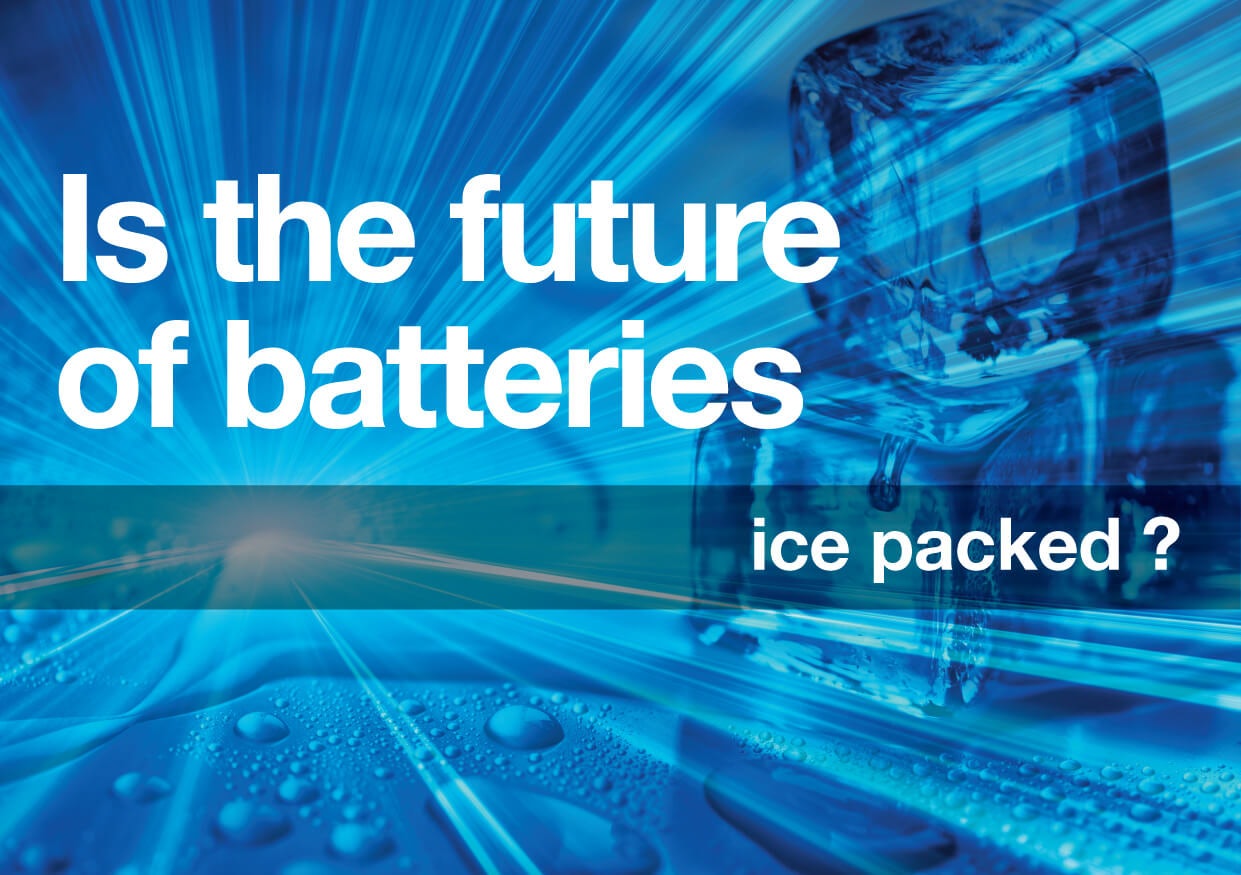Is the future of batteries ice packed?
Dashboard has recently published a number of articles concerning batteries and new solutions for energy sources, as this is an important area of innovation for us.
Diving into bacteria-powered batteries, AI connected batteries and supercapacitor battery alternatives, we have reported on the latest news and scientific discoveries. Now they all fall under the same threat of being overshadowed by a competitor.
Despite the countless benefits and the positive sides of the aforementioned solutions, they may not be enough to stand up to the phenomenon that is the ice battery. Ice batteries, as they have come to be known for their ice integrated process, are gaining interest rapidly in the field of renewable energy storage for their cost-efficiency and relative environmental friendliness.
Ice batteries target the area that traditional batteries have the least control over – cooling down. The technology is based on a smart system that commences the batteries’ ice generation during the night at off peak hours. As utility usage peaks towards the day hours, the ice melts and creates cold air – stopping the batteries from overheating but also making it a particularly attractive option for air conditioning by allowing the unit to rest. Using this method, it promises to reduce the energy’s fuel requirement anywhere from 8% to 30% and could bring down the costs by 40%.
The numbers prove it is not a completely unsustainable alternative but consumers are driven by cost and energy efficiency rather than environmental prospects. For example, announced in the second half of January 2017, the Southern California Public Power Authority (SCPPA) have gone ahead with the purchase of “up to 100” units of ice batteries that have a potential of 1 megawatt. While there is no comment from SCPPA, their supplier company Ice Energy’s CEO Mike Hopkins did state the project is “a win for member utilities, who will be able to mitigate residential peak demand in a reliable and cost-effective manner,” not even mentioning the reduction in the environmental impact.
It is this that can lead other organisations to move towards ice batteries over newly developed greener and more innovative counterparts. While to date the product has been met with extreme positivity in mainly cooling operations yet it is only a matter of time until it expands into other areas too. This prediction raises some concern over whether or not other batteries stand a chance over the massive cost absorber that is the ice battery and if so, on what grounds.
Dashboard can see the two coexisting side by side and certainly hopes that this will be the case. We are, of course, supporters of clean energy and economic efficiency but do not believe it should come at cost to other products that are a fantastic fit for their specific targets. A wide range of technology being in use will encourage further innovation, a value we are a strong supporter of.
